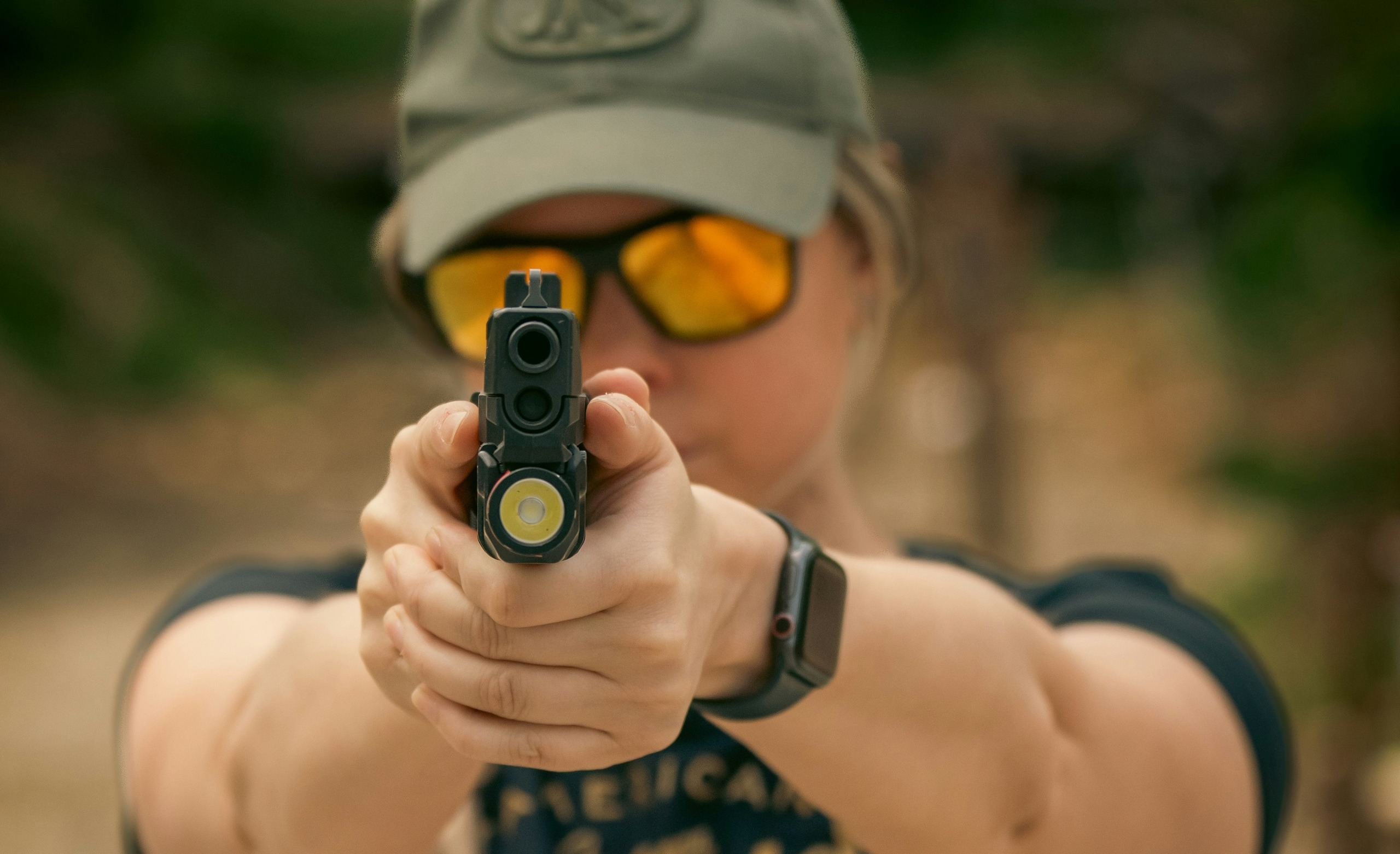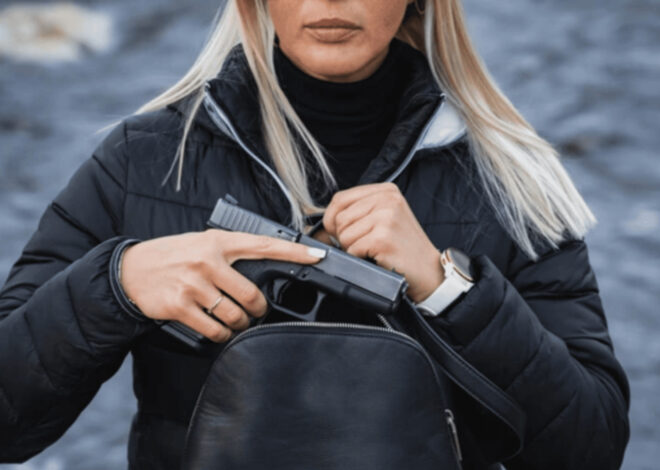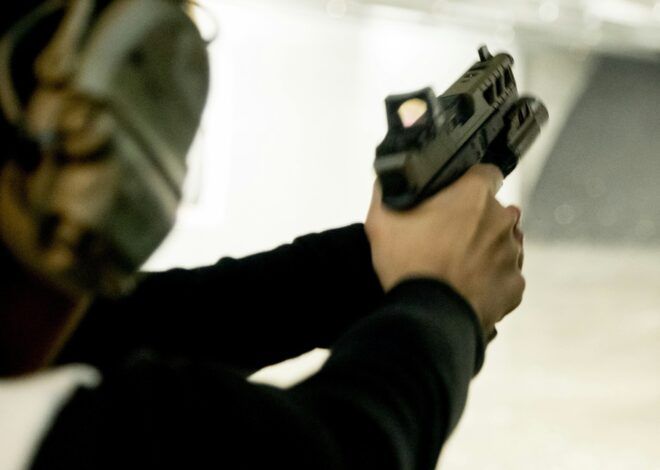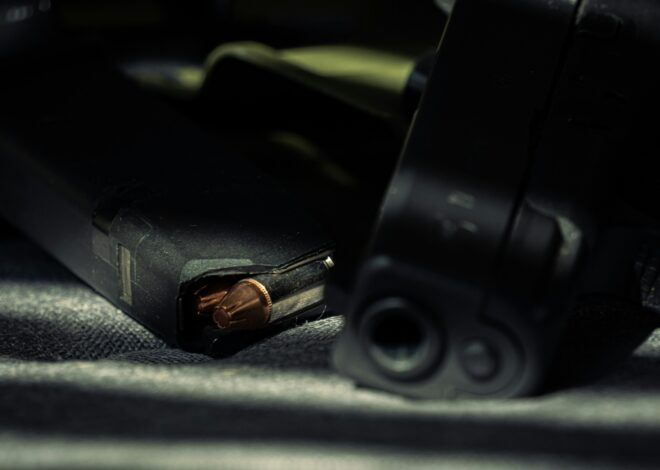
How To Shoot A Pistol Accurately
Whether you’re interested in self-defense, target shooting, or simply honing your marksmanship skills, understanding how to shoot a pistol accurately is essential. Shooting a pistol can be an empowering experience, combining skill and precision in one exhilarating activity.
It’s not just about pulling the trigger; it’s about mastering techniques that enhance your accuracy and confidence with every shot you take. If you’ve ever felt frustrated at the range or want to elevate your skills from novice to expert, this guide is for you.
Get ready to learn the fundamentals and techniques that will help you hit your target every time!
The Importance of Proper Technique
Proper technique is essential for anyone looking to master pistol shooting. It sets the foundation for accuracy and consistency, transforming an enjoyable hobby into a skillful pursuit. When you focus on your technique, every shot becomes more deliberate.
This attention helps in minimizing errors that could lead to misses or misfires. Additionally, using correct posture and grip allows better control over the firearm. A stable stance reduces fatigue and enhances precision during extended practice sessions.
Understanding how each part of your body interacts with the gun can significantly influence performance. With proper techniques ingrained, you build muscle memory. This not only boosts confidence but also prepares you for various shooting scenarios. Mastering these fundamentals is crucial before moving on to advanced skills or competitive shooting events.
Understanding the Mechanics of a Pistol
A pistol is a finely crafted piece of machinery, and understanding its mechanics is essential for accurate shooting. At its core, the pistol consists of several key components: the frame, slide, barrel, recoil spring, and magazine. The frame houses the trigger mechanism and grips your hand during firing.
It’s crucial that you know how to hold it correctly to maintain control. The slide moves back and forth when fired. This action ejects spent casings while chambering a new round. Recognizing this motion can help you grasp how pistols cycle between shots efficiently.
Next comes the barrel where bullets travel upon discharge. The length and rifling pattern affect accuracy significantly. Understanding these parts helps shooters appreciate their role in achieving precision with every shot fired. Engage with each component; they all play vital roles in delivering accuracy downrange.
Step-by Step Guide: Shooting a Pistol Accurately
Shooting a pistol accurately involves mastering several key elements. Each of these steps builds upon one another for improved accuracy as you practice regularly.
Step #1. Proper Grip and Stance for Accuracy
A solid grip and stance form the foundation of accurate shooting. Begin by wrapping your dominant hand around the pistol’s grip, ensuring that it’s high and tight against the frame. Your fingers should wrap fully, with your index finger resting alongside the slide when not on the trigger.
Now, bring your non-dominant hand into play. Place it over your dominant hand for added stability. The heel of this supporting hand should press against the base of your dominant thumb, creating a secure two-handed hold.
Your stance matters just as much as grip. Stand with feet shoulder-width apart for balance. Lean slightly forward from your waist while keeping knees soft but firm. This position helps absorb recoil and enhances control during follow-up shots.
Adjusting these elements will significantly improve accuracy in every shot you take at the range or in a defensive situation.
Step #2. Focusing on Sight Alignment and Sight Picture
Sight alignment and sight picture are critical components of accurate pistol shooting. Sight alignment refers to the relationship between your front and rear sights, while sight picture incorporates that alignment with your target.
To achieve proper sight alignment, ensure that the top of the front sight is level with the top of the rear sight. The front sight should be centered in the rear notch. Any misalignment here can throw off your shot.
Next, focus on creating a clear image of what you want to hit. This means bringing your target into view without losing clarity on those aligned sights. Your eyes should prioritize the front sight; it’s what guides your bullet toward its mark.
Remember to keep both eyes open if you’re comfortable doing so—this enhances peripheral vision and helps maintain awareness of your surroundings while aiming for accuracy.
Step #3. Trigger Control
Trigger control is a critical component in shooting accurately. It involves the way you manipulate the trigger to ensure a smooth and precise shot.
To start, place your finger on the trigger in a manner that allows for maximum control. The pad of your index finger should make contact with the trigger, not the joint or tip. This helps maintain stability as you prepare to fire.
Pulling the trigger requires patience. Rather than jerking it back, apply steady pressure until you reach a breaking point where the gun discharges. This technique minimizes any unintentional movement.
Practice dry firing can be beneficial too. This method involves pulling the trigger without live ammunition to develop muscle memory and confidence.
Remember, good trigger control translates directly into better accuracy downrange. Focus diligently on this step during practice sessions; it’ll pay dividends when it matters most.
Step #4. Breathing Techniques for Steady Aim
Breathing plays a vital role in shooting accuracy. It’s often overlooked, yet it can make the difference between hitting your target or missing completely.
When you’re about to shoot, take a deep breath. Inhale slowly and steadily through your nose. This helps calm your nerves and centers your focus.
As you exhale, let out just enough air to feel relaxed but still alert. When you reach the natural pause after exhaling, that’s when you should pull the trigger. This moment is key; it reduces movement and steadies your aim.
Practice this technique regularly at the range. The more comfortable you become with managing your breath under pressure, the better you’ll perform during live fire situations.
Remember: controlled breathing isn’t just for relaxation; it’s crucial for precision shooting as well.
Step #5. Practice Drills for Improving Accuracy
To enhance your accuracy, consistent practice is key. Incorporating drills into your routine can make a noticeable difference in your shooting skills.
Start with the basics: draw and fire exercises. Set a target at close range, drawing from a holster or low ready position. This helps build muscle memory and improves reaction time.
Next, try the “dot drill.” Place several small targets on a larger sheet of paper. Fire one shot at each dot within a set timeframe. This hones focus and precision under pressure.
Another effective method is the “ball-and-dummy” exercise. Have an assistant load live rounds mixed with dummy rounds in your magazine without you knowing which is which. This sharpens trigger control by forcing you to maintain discipline regardless of whether it’s a real shot or not.
Make sure to track your progress too; keeping records will help identify areas for improvement as you advance in skill level.
Common Mistakes and How to Correct Them
Many shooters struggle with common mistakes that can hinder accuracy. One frequent error is failing to maintain a proper grip on the pistol. Make sure your hands are firm but relaxed, allowing for better control during firing. Another issue arises from improper sight alignment.
If your sights aren’t lined up correctly, even the best trigger pull won’t yield good results. Spend time practicing this fundamental aspect until it feels natural. Flinching before the shot is another common pitfall. It’s often caused by anticipation of recoil or noise.
To combat this, practice dry-firing techniques to build confidence without the distraction of an actual shot. Neglecting follow-through can lead to poor shooting habits. After each shot, focus on maintaining your position and observing where the bullet impacts to learn and adjust accordingly.
Gear Recommendations for Optimal Shooting
Choosing the right gear can significantly enhance your shooting experience. Start with a quality pistol that fits your hand comfortably and meets your needs, whether for self-defense or sport. A sturdy holster is essential for safety and accessibility.
Look for one that offers secure retention while allowing quick draws. Don’t overlook eye protection; ballistic glasses not only shield you from debris but also improve visibility in various lighting conditions.
Hearing protection is equally important. Opt for electronic earmuffs that amplify ambient sounds while blocking harmful noise levels. This way, you’ll stay aware of your surroundings without compromising hearing safety.
Invest in high-quality ammunition designed specifically for accuracy to ensure optimal performance on the range or in the field. Each component plays a crucial role in honing your skills and achieving better results when you shoot a pistol accurately.
Safety Tips for Shooting a Pistol
Safety should always be the top priority when shooting a pistol. First and foremost, treat every firearm as if it is loaded. This mindset helps prevent accidents. Always keep your finger off the trigger until you are ready to shoot. It’s a simple rule that can save lives.
Make sure to wear proper eye and ear protection before firing. The loud noises and potential debris from shooting can cause serious damage without these precautions. Be aware of your surroundings too; know what is beyond your target.
A bullet can travel much further than you might expect, so ensure there’s a safe backdrop. Never point the gun at anything you don’t intend to destroy. Practicing this discipline reinforces responsible handling habits essential for any shooter.
Taking Your Shooting Skills to the Next Level
To elevate your shooting skills, consider incorporating advanced techniques into your practice routine. One effective method is the use of dry firing exercises. This allows you to focus on trigger control and sight alignment without the distraction of recoil.
Joining a local shooting club can also provide valuable insights from more experienced shooters. Engaging in discussions and participating in competitions exposes you to different styles and strategies that can enhance your performance.
Exploring various shooting disciplines, such as tactical or precision shooting, challenges your adaptability and sharpens different skill sets. Each discipline has unique requirements that push you beyond basic proficiency.
Regularly reviewing video footage of yourself while practicing helps identify areas for improvement. Self-analysis fosters greater awareness of habits you might not notice during live-fire sessions. Consider professional coaching for personalized feedback tailored to your needs. A fresh perspective often unlocks potential previously overlooked.
Conclusion: Shooting a Pistol Accurately
Shooting a pistol accurately requires commitment, practice, and an understanding of the fundamentals. By mastering grip, stance, sight alignment, trigger control, and breathing techniques, shooters can significantly improve their accuracy. Regularly engaging in practice drills will build muscle memory and confidence.
Avoiding common mistakes ensures that bad habits don’t impede performance. Investing in quality gear tailored to your needs enhances your shooting experience while adhering to safety protocols keeps you and others safe on the range.
Whether you’re a beginner or looking to refine your skills further, applying these principles will elevate your proficiency with a pistol. Embrace the journey of becoming an accurate shooter; each session brings opportunities for growth and improvement in this rewarding skill set.



